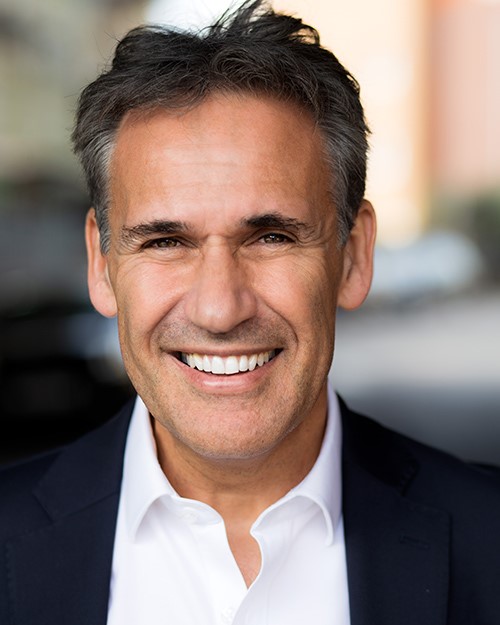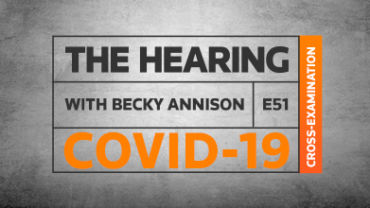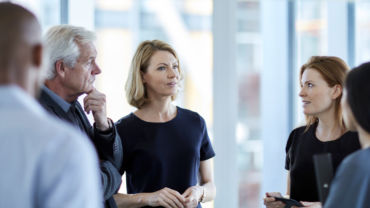10 Jun 2020
It’s the questions on the mind of every legal professional: What will legal life look like after the COVID-19 passes? What will this ‘new normal’ actually be?
In the first of a three-part global webinar series, The Uncertain Decade, Legal Geek sought to shed some light on these questions, bringing together two of the most respected names in the legal industry—Mark Cohen, CEO of Legal Mosaic, and Professor Richard Susskind—to delve into how law firms, courts, and the general population are facing unprecedented legal challenges in the current crisis environment.
Cohen began with a historical perspective about the COVID-19 crisis, citing four previous transformative events after which the legal community bounced back, with one exception. The global financial crisis that began in 2008 permanently altered the way law firms function and interact with clients.
Such transformative events force law firms to reconsider the traditional model of work, birthing a “new era of legal operations”, said Cohen. Historically, what stood out is what failed to change, Cohen explained, adding that law schools and the courts returned to normal, greatly unaffected by the financial crisis.
Why is now different?
Now, however, the reckoning has arrived. In a matter of weeks, law schools converted to online education, something they had resisted for more than a decade. Courts too, have begun to adjust adapting latent technology that had emerged from ‘other industry use’ to their new reality. “It simply needed to be turned on”, said Cohen, adding that ultimately, these older components—physical classrooms, some in-person courts, and in-person client meetings, are no longer necessary.

Mark Cohen, CEO of Legal Mosaic
It is “a bright light being shined on how we can do things differently in legal,” Cohen said.
When asked how much of the physical nature of the practice of law do we really need now, Cohen pointed out that the entire legal workforce became a remote workforce almost overnight and in general, it seems to be working.
What is the impact to industry components?
The bellwether for change is the general counsel, Cohen continued, adding that General Counsels (GCs) have already been doing more with less for a time now—truly being “proactive enterprise defenders”. Now, all legal service providers and vendors need to look toward the GC and senior legal teams because they are “living law’s future”.
Cohen then broke down the industry components into four main areas:
Consumers: Individuals in need of legal counsel are driving change. There is increased access to information and platforms where data is available and that is driving process. People will now make decisions based on competency, metrics, and expertise as data accessibility is universal and process is increasingly coveted.
Academia: The universities will need to rethink their curricula. Education is a lifelong pursuit, and newer programs will need to incorporate many disciplines beyond the classics, including marketing, technology, and business.
Legal Service Providers: Cohen said for legal providers, the main theme is an emphasis on customer-centric models, more than ever before. While new solutions will be data-driven, it is about vendors learning and understanding more deeply about the customer and thereby driving more value to them.
Courts: In the short term, in the US, “courts have been crippled,” said Cohen. Cohen then brought up a concept using the Chinese word for crisis—Wéijī, explaining that crisis has two meanings in Chinese, “danger” and “opportunity”. The courts and associated lawyers find themselves in Wéijī at the moment. The courts now are paralysed, of course, but they could seize the opportunity and transform the entire industry with intelligent adoption of technology and process.
On the state of the market
For his part, Professor Susskind views the current legal market conditions in several phases. Initially, the legal industry had to mobilise to enable work to be produced. Currently, he sees this lockdown phase as a test which provides an inordinate amount of valuable data. In his grander vision, we have an impromptu ‘Proof of Concept’ at hand, Susskind observed. “We should be capturing as much data as possible and seeing which innovations could work going forward” during this lockdown, he explained. Eventually the third phase, emergence will come; however, this will be complicated by a bifurcated marketplace of individuals empowered to return to the office and those forbidden from doing so. Fundamentally, legal work be done differently going forward, and face-to-face interactions may no longer dominate, Susskind said.
While most managers in the legal sphere are focused on the here-and-now, Susskind argued that people “need to be looking at the long term and asking themselves to what extent have things really changed?”

Professor Richard Susskind
For example, Susskind noted the absence of recent artificial intelligence chatter and believes that the urgency of artificial intelligence (AI) might will die down for the next 18 months. Since AI is less tangible for most day-to-day operations, it could fade as a focus for law firms and the courts.
Indeed, all the current attention in the legal industry surrounds basic technology that enables job function. While the future of people working from home with basic technology has arrived, it is built on a “house of cards” and “stuck together with bubble gum,” stated Susskind. The legal industry will endeavour for practical secure and permanent ‘work from home’ solutions; and therefore, the more nebulous, dreamier innovations that might on day again push the limits of the law and technology may be on hold for now.
The call for remote courts
“What was thought to have been a 10-year plan to move the world’s antiquated court system to a remote one actually only took a few weeks”, said Susskind. Now, Susskind indicates, his preoccupying thought remains: Is a court is a service or a place? And if the latter, do we really need that place?
To that end, courts around the world have morphed into three possible types:
- Audio, where some of the events are either entirely or partially access by telephone;
- Video, which mirrors audio in its use; and,
- Paper, which still requires submissions to the court be in written form and the judges respond in kind.
The early evidence of these new court systems is very positive. To the surprise and scepticism of many, “it seems to be generally working,” said Susskind, adding that people were distrustful of this shift, as we have seen little change on this front in more than 150 years.
Rapid transformation is upon us, Cohen and Susskind agreed. In a matter of weeks, the legal industry experienced more change than it had in previous decades. The light is bright on how things can be done in legal, but much more data needs to be digested to see the resulting outlines of the industry’s future.



